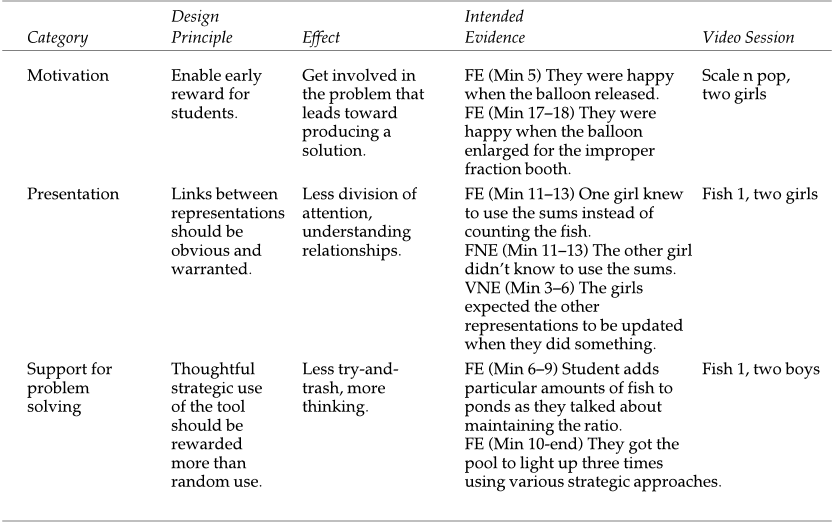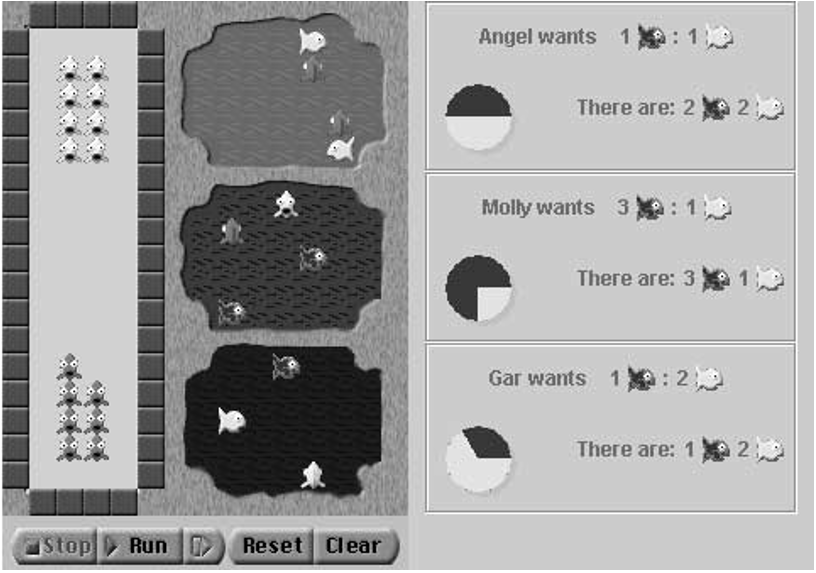




read more









One such effort in mathematics education, the Educational Software Components of Tomorrow ( ESCOT ) project, created 42 miniature applications each consisting of a context, a set of questions, and one or more interactive applets to help students explore a mathematical concept. This article describes the method used to mine a subset ( 25 ) of these applets for design principles that describe successful learner-centered design by drawing on such data as videos of students using the software and summaries of written student work. The main purpose of this article is to operationalize a method for post hoc extraction of design principles from an existing library of educational software, although readers may also find the design principles themselves to be useful. The purpose of this article is to describe the process that IDEA ( Identifying Design principles in Educational Applets ) participants used to cull design principles from a library of applets developed for mathematics education. The authors view the process of extracting these design principles as a first step in a broader methodology of proposing, refining, vetting, and using design principles. For example, Sinclaire ( 2003 ) studied student interactions with javabased dynamic geometry sketches that are accompanied by a set of questions to guide student exploration of the objects in the sketches. From her analysis of student work with the sketches, she has extracted a set of guiding principles that should inform future development ( e. g., questions should aim to focus student attention on aspects of the sketch, whereas the The design of technology tools has the potential to dramatically influence how students interact with tools, and these interactions in turn may influence students ’ content area understanding and problem solving.
Twenty-one design principles were identified, falling into the categories of motivation, presentation, and support for problem solving.
Of the 42 EPoWs that were developed for the ESCOT project, the authors selected a subset of 25 for the purpose of mining design principles.
It was hypothesized that a history of actions would encourage student reflection and strategy tuning, and reduce duplication of incorrect solution strategies.
The CLEAR button will erase all fish from the tank onthe left and the three ponds, whereas the RESET button will place all 26 fish back into the tank.
The ratio counts and pie graph are intended to facilitate a better understanding of the problem and engage students in thinking about how to adjust their strategy for distributing fish.
The ESCOT project resulted in valuable lessons learned regarding problem context, questions, and applet design, as well as the interactions among these features.
The main purpose of this article is to operationalize a method for post hoc extraction of design principles from an existing library of educational software, although readers may also find the design principles themselves to be useful.
To illustrate the four coding categories (FE, FNE, VE, VNE), consider the followed design principle of “ uses dynamic multiple representations” and the violated design principle “ history of actions.
Over the course of two school years (1999– 2001), integrated design teams consisting of professional programmers, teachers, mathematics education researchers, and educational technologists, produced 42 problem contexts with supporting applets that were intended to facilitate mathematical problem solving for middle school students.
the authors are excited about their current method as a way to link craft and theoretical knowledge in educational software design.
Although this problem can be solved using algebraic techniques, the intent of using the problem situation and tools in the Java applet was to engage stu-dents in thinking about different strategies and solution paths, as well as part– part and part– whole reasoning and equivalent ratios.
Schön (1992) described the notion of a reflective practitioner, a designer who entered an interactive dialogue with the designed artifacts and their setting.
Fish Farm uses multiple representations to provide a visual display of male and female fish: ratio counts, pie graphs, and the fish themselves.
The complete materials associated with this EPoW include: (a) the problem situation and questions, (b) an interactive applet, (c) a teacher support page with suggestions for pre and post activities, and (d) expected solutions.
Small groups consisting of 2– 3 people with complementary expertise took each of the design principles and a subset of the EPoWs (with some EPoWs common to all the groups) and noted if features in each EPoW suggested whether the principle was followed, violated, or irrelevant, while the definitions of the design principles continued to evolve through discussion in the larger group.